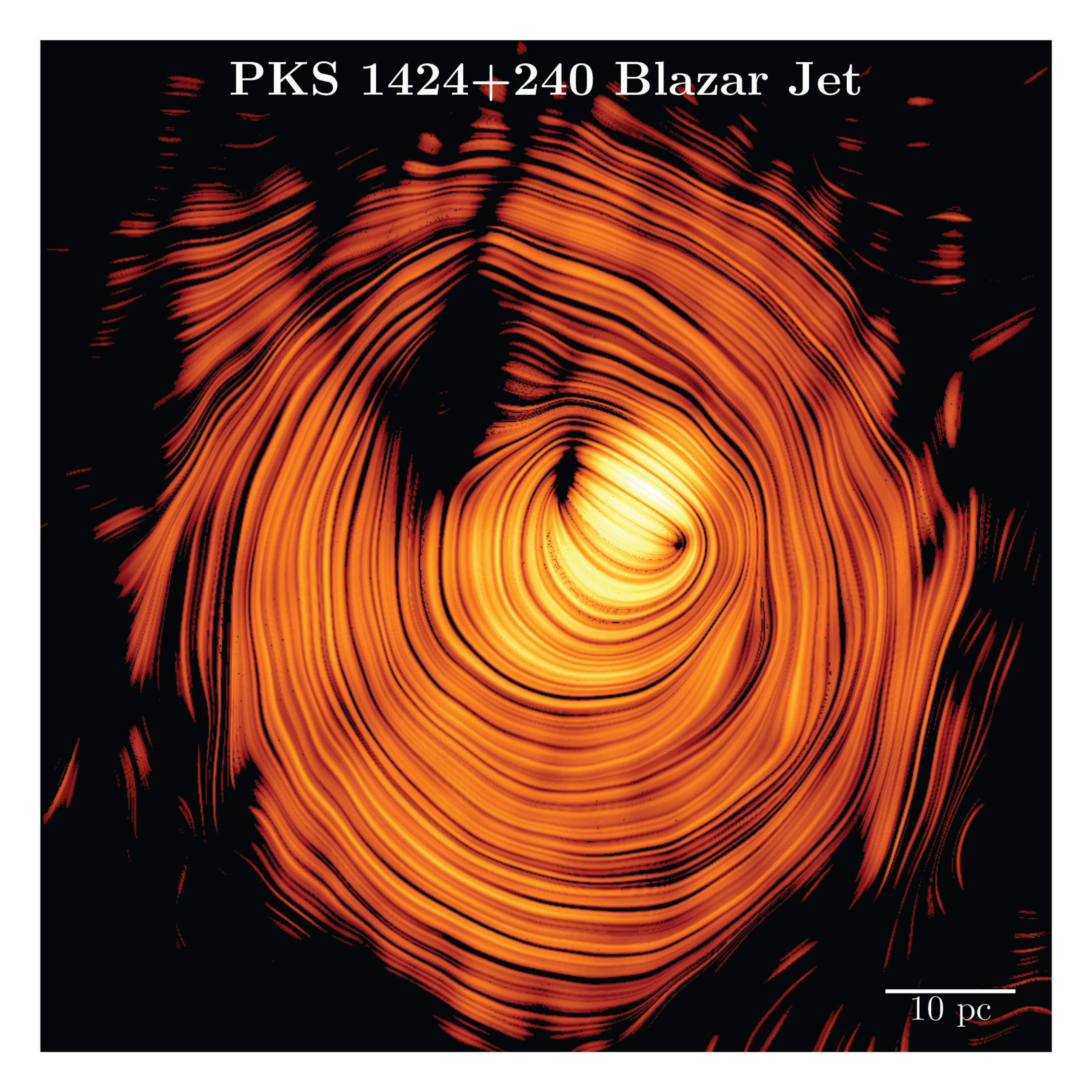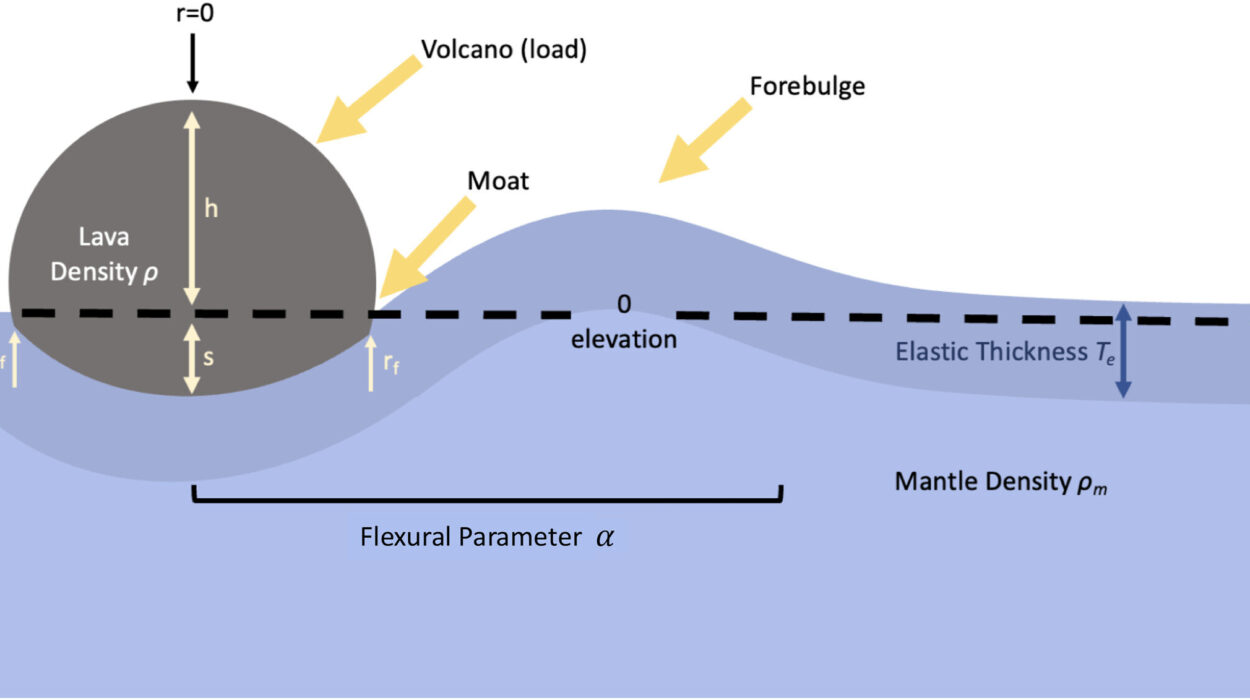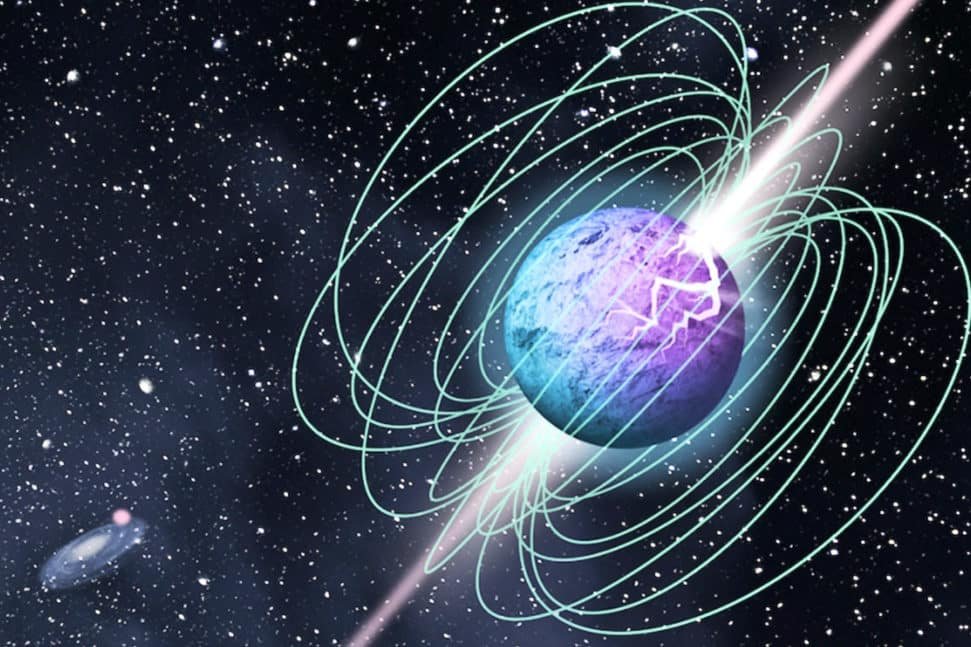For more than ten years, one cosmic object has been taunting astronomers with a baffling contradiction. Known as PKS 1424+240, it’s a blazar—a type of active galaxy where a supermassive black hole feeds on surrounding matter, launching twin jets of charged particles at nearly the speed of light.
This blazar stood out for being unusually bright in two of the universe’s most extreme messengers: high-energy gamma rays and neutrinos. The IceCube Neutrino Observatory flagged it as the brightest known neutrino-emitting blazar, while ground-based Cherenkov telescopes confirmed it as a powerhouse of very high-energy gamma rays.
Yet one thing didn’t add up. Its radio jet appeared sluggish. Conventional wisdom said that only the fastest, most highly beamed jets could produce such intense high-energy signals. PKS 1424+240 seemed to be breaking the rules.
Now, astronomers may finally have the answer—thanks to 15 years of meticulous observations with one of the sharpest tools in astronomy.
Seeing the Jet in Unprecedented Detail
Using the Very Long Baseline Array (VLBA)—a network of radio telescopes stretching across the United States—researchers pieced together a high-resolution portrait of PKS 1424+240’s jet.

“When we reconstructed the image, it looked absolutely stunning,” said Yuri Kovalev, lead author of the study and Principal Investigator of the MuSES project at the Max Planck Institute for Radio Astronomy (MPIfR). “We have never seen anything quite like it—a near-perfect toroidal magnetic field with a jet pointing straight at us.”
The image has an otherworldly quality, resembling the fiery slit-pupil gaze of the “Eye of Sauron” from The Lord of the Rings. But unlike fiction, this cosmic eye is real, and its stare reaches across billions of light-years.
An Optical Illusion with a Relativistic Twist
The key to solving the mystery lies in geometry and the strange effects of Einstein’s theory of special relativity. PKS 1424+240’s jet is aimed almost directly at Earth—within a fraction of a degree. This “head-on” alignment amplifies its high-energy emission by a factor of 30 or more, a phenomenon known as relativistic beaming.
The irony? While the jet is actually moving at near-light speeds, projection effects make it appear to be creeping along in the radio images—a classic cosmic optical illusion.
“From our vantage point, it’s like looking down the barrel of a flashlight,” explained Jack Livingston, a co-author at MPIfR. “It seems slow because we’re staring almost straight into it.”
Magnetic Fields: The Engine Behind the Power
By analyzing the polarized radio signals from the blazar, the team mapped the structure of its magnetic field. The data revealed a likely helical or toroidal magnetic configuration, wrapped around the jet like threads in a tightly wound spring.
This magnetic architecture is crucial. It not only launches and collimates the flow of plasma but may also serve as the mechanism that accelerates particles—both electrons and protons—to extreme energies. The latter are the likely source of the observed high-energy neutrinos.
“Solving this puzzle confirms that active galactic nuclei with supermassive black holes are not only powerful accelerators of electrons, but also of protons,” Kovalev said. “This is where some of the most extreme particles in the universe are born.”
A Triumph for Multimessenger Astronomy
The discovery is a major milestone for the MOJAVE program (Monitoring Of Jets in Active galactic nuclei with VLBA Experiments), a decades-long effort to observe relativistic jets in active galaxies. By combining radio astronomy, gamma-ray observations, and neutrino detections, scientists are weaving together the multi-layered story of how black holes energize the cosmos.
“When we started MOJAVE, the idea of one day directly connecting distant black hole jets to cosmic neutrinos felt like science fiction,” said Anton Zensus, Director at MPIfR and co-founder of the program. “Today, our observations are making it real.”
The implications ripple across the field of multimessenger astronomy—an emerging discipline that combines light, particles, and gravitational waves to study the universe. By locking down the connection between relativistic jets, high-energy neutrinos, and magnetic field structure, astronomers are closing in on one of the greatest mysteries of modern astrophysics: the origin of the universe’s most energetic particles.
The Cosmic Eye That Watches
In the end, PKS 1424+240 is more than just another point of light in the sky. It’s a cosmic engine, beaming its fierce energy across billions of light-years, its gaze locked on our tiny blue planet.
Through patience, technology, and an unyielding curiosity, astronomers have finally understood its deceptive nature—and in doing so, they have sharpened humanity’s vision of how the most extreme corners of the universe truly work.
More information: Y.Y. Kovalev et al, Looking into the jet cone of the neutrino-associated very high-energy blazar PKS 1424+240, Astronomy & Astrophysics (2025). DOI: 10.1051/0004-6361/202555400






